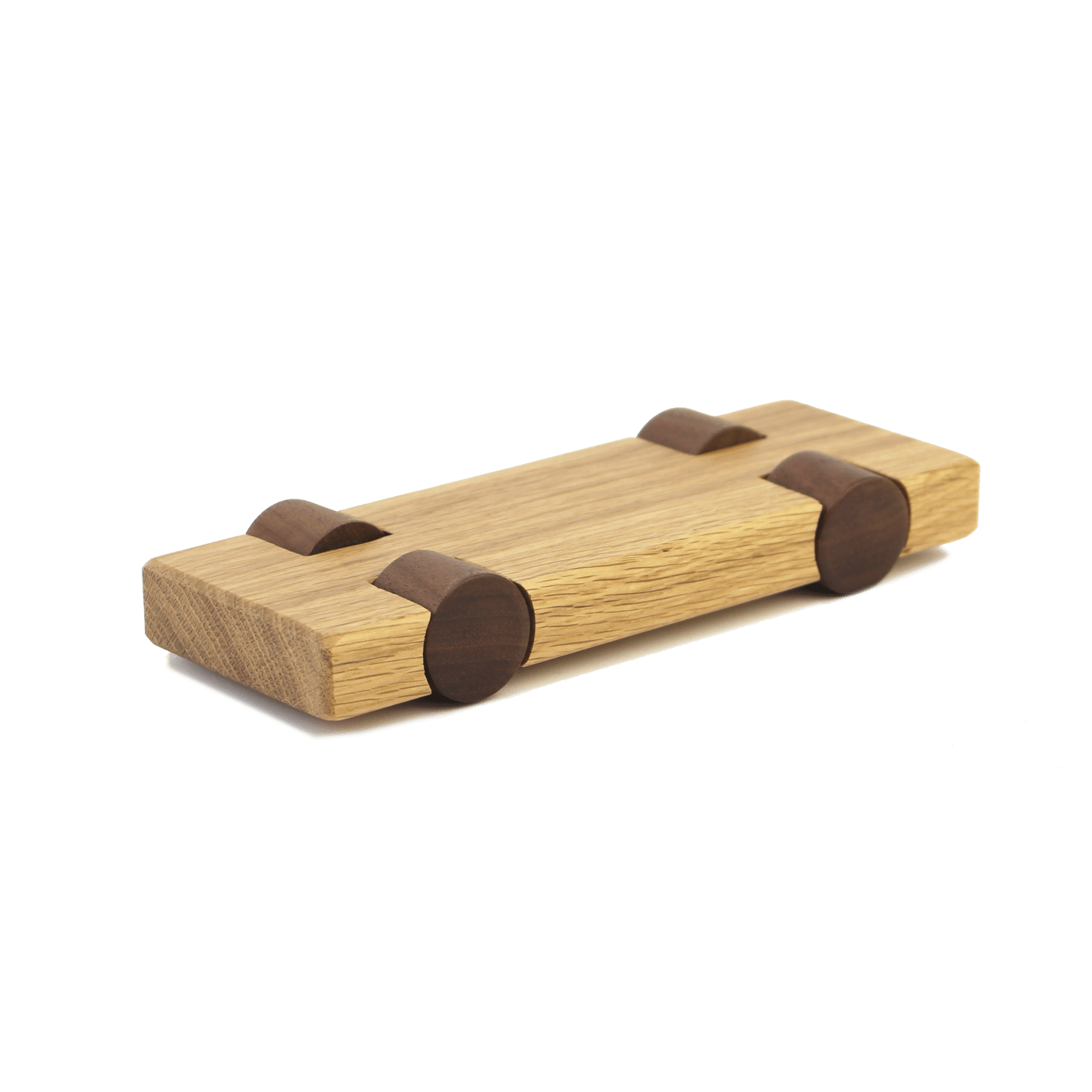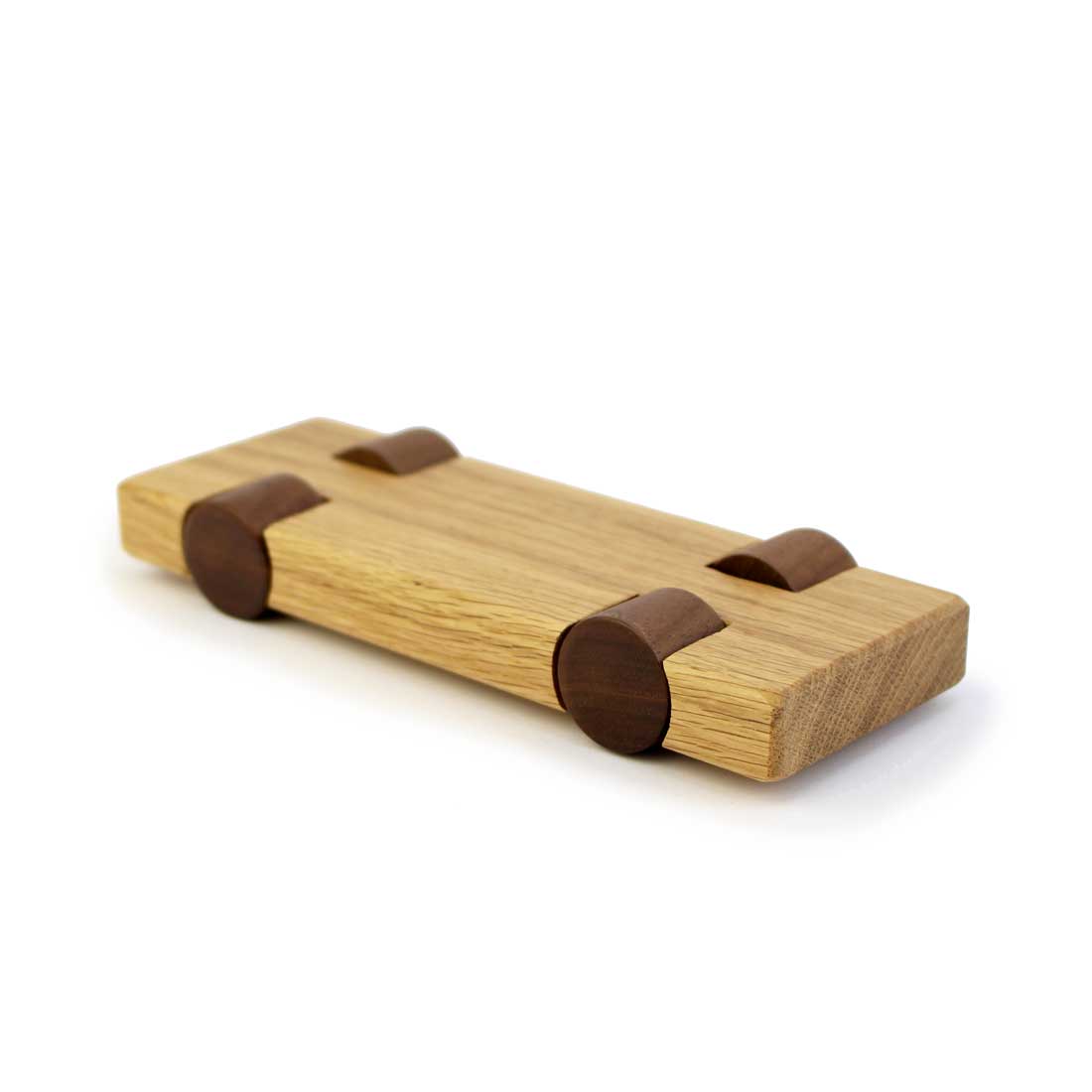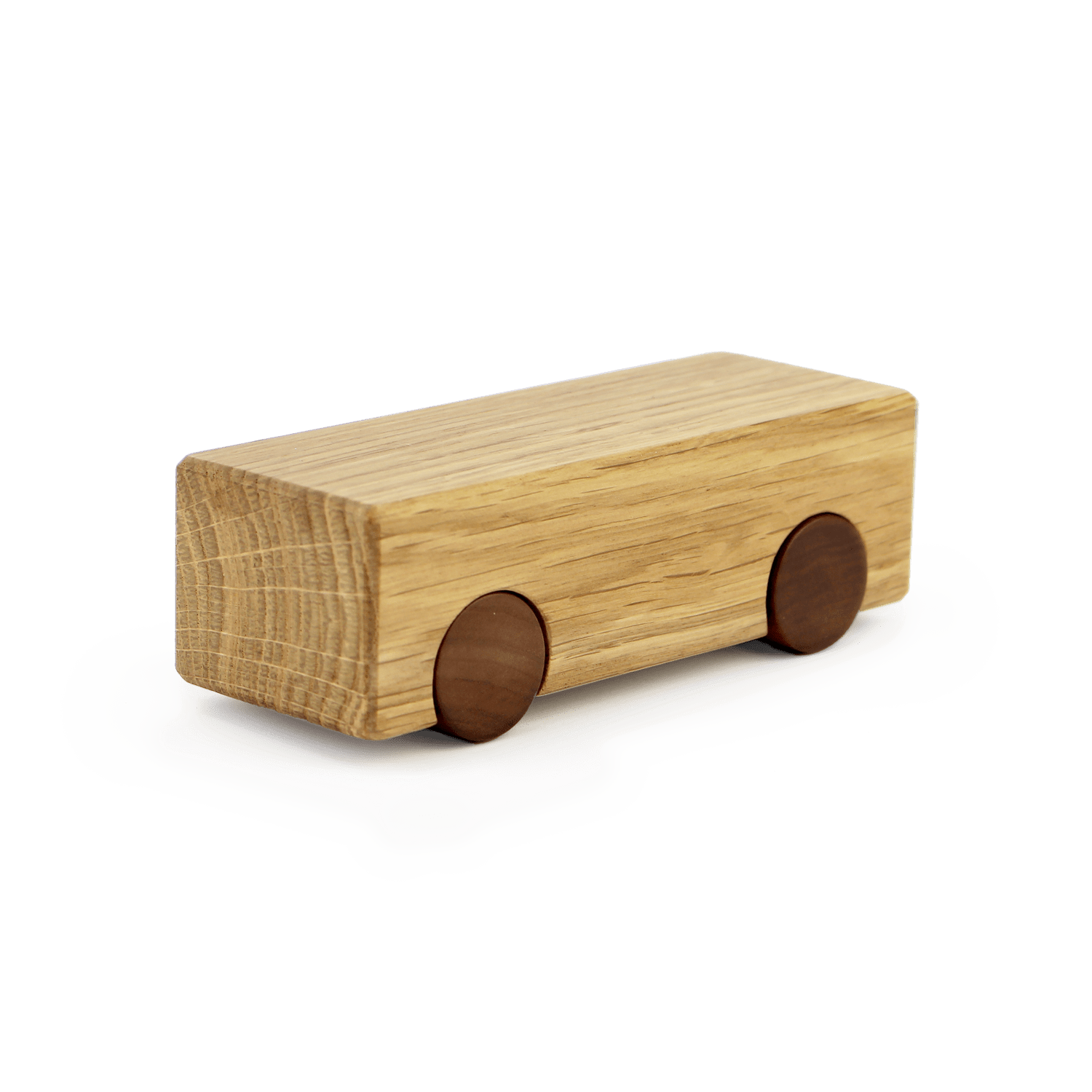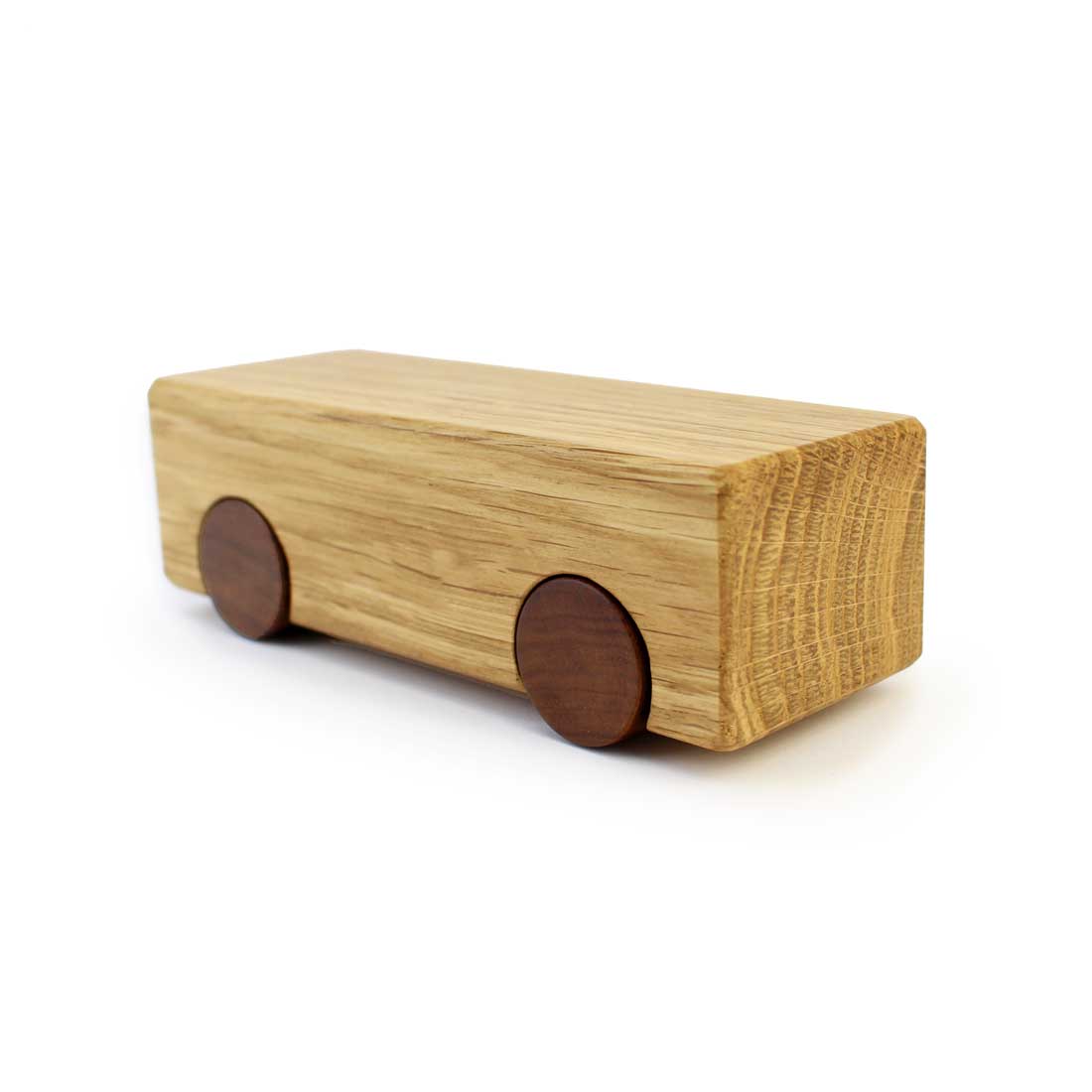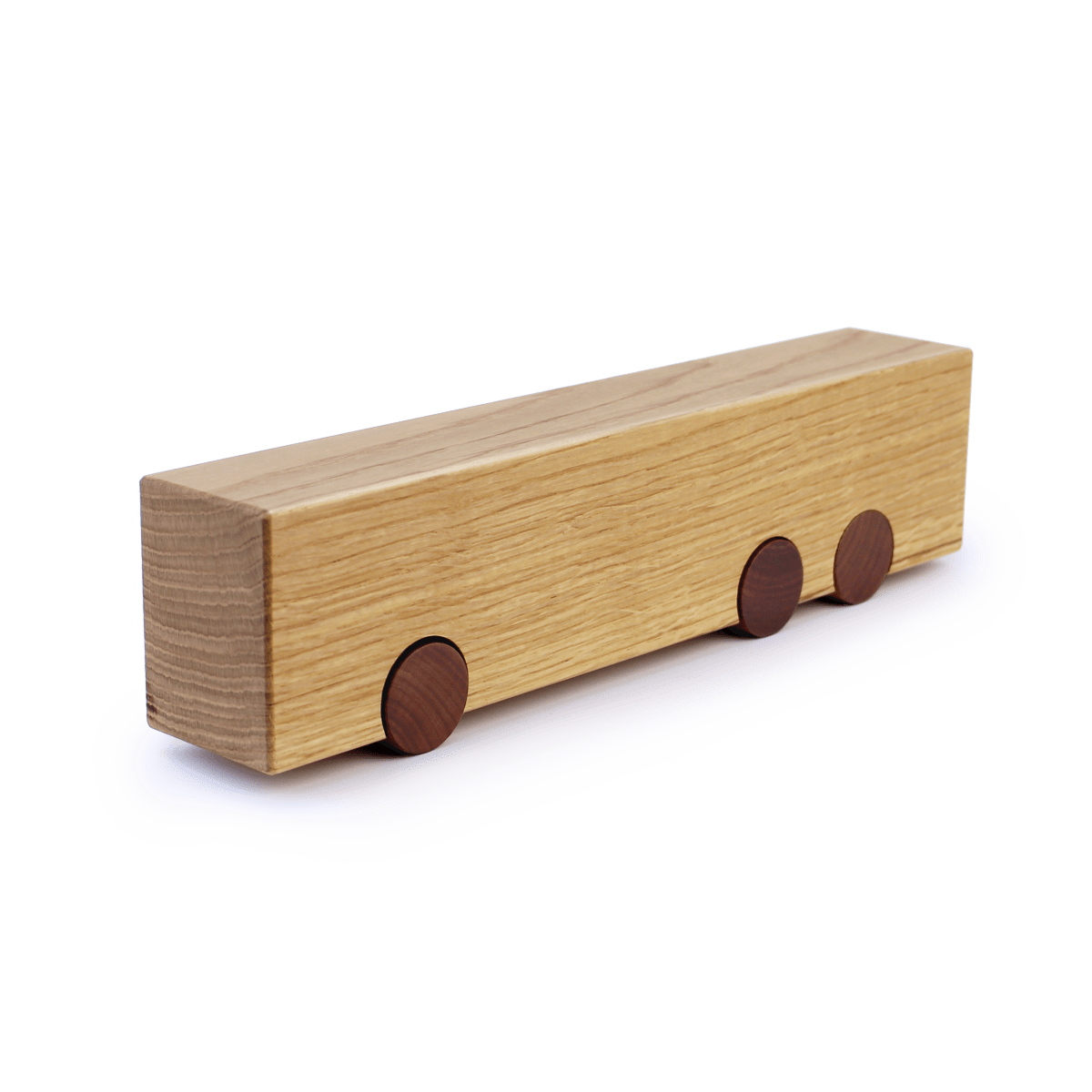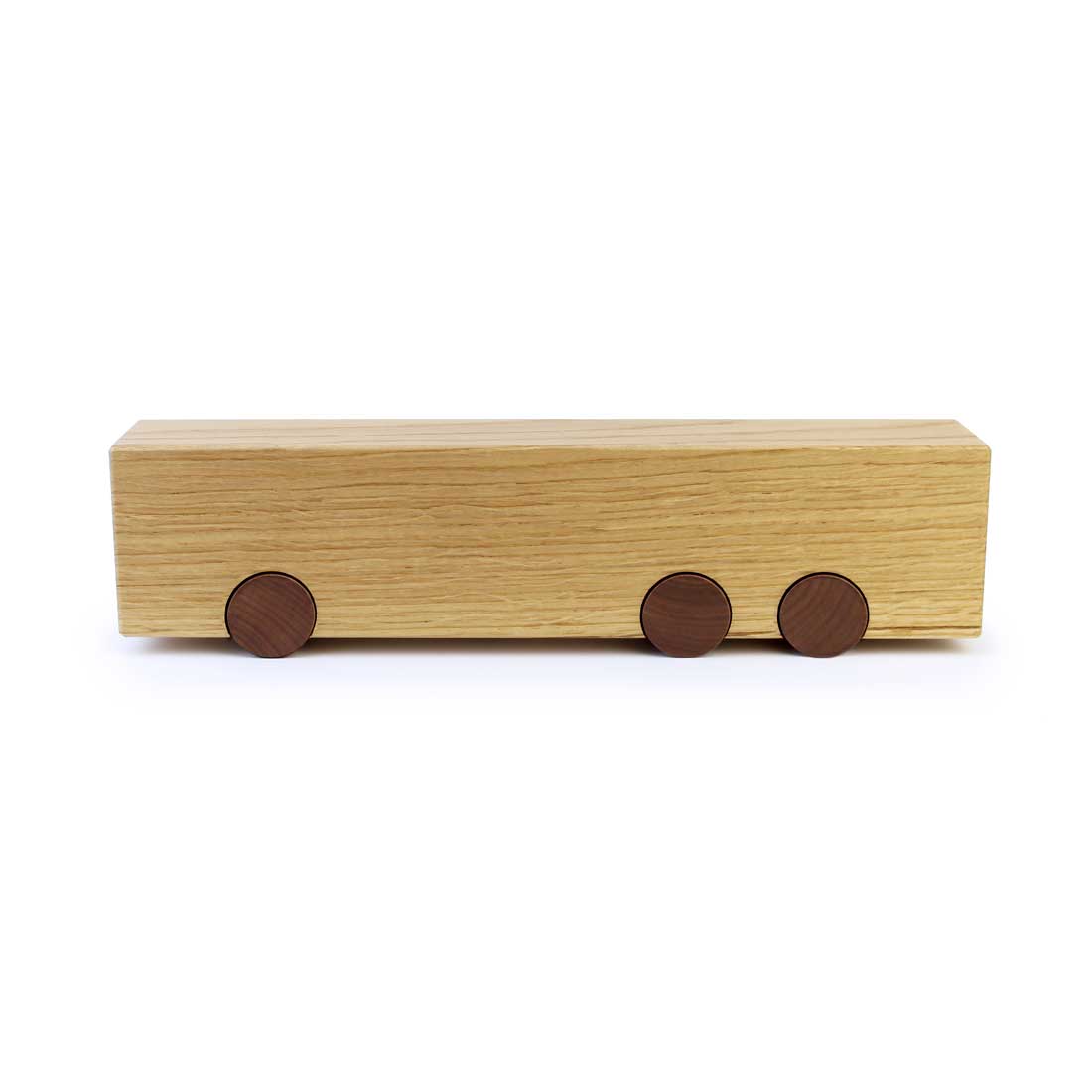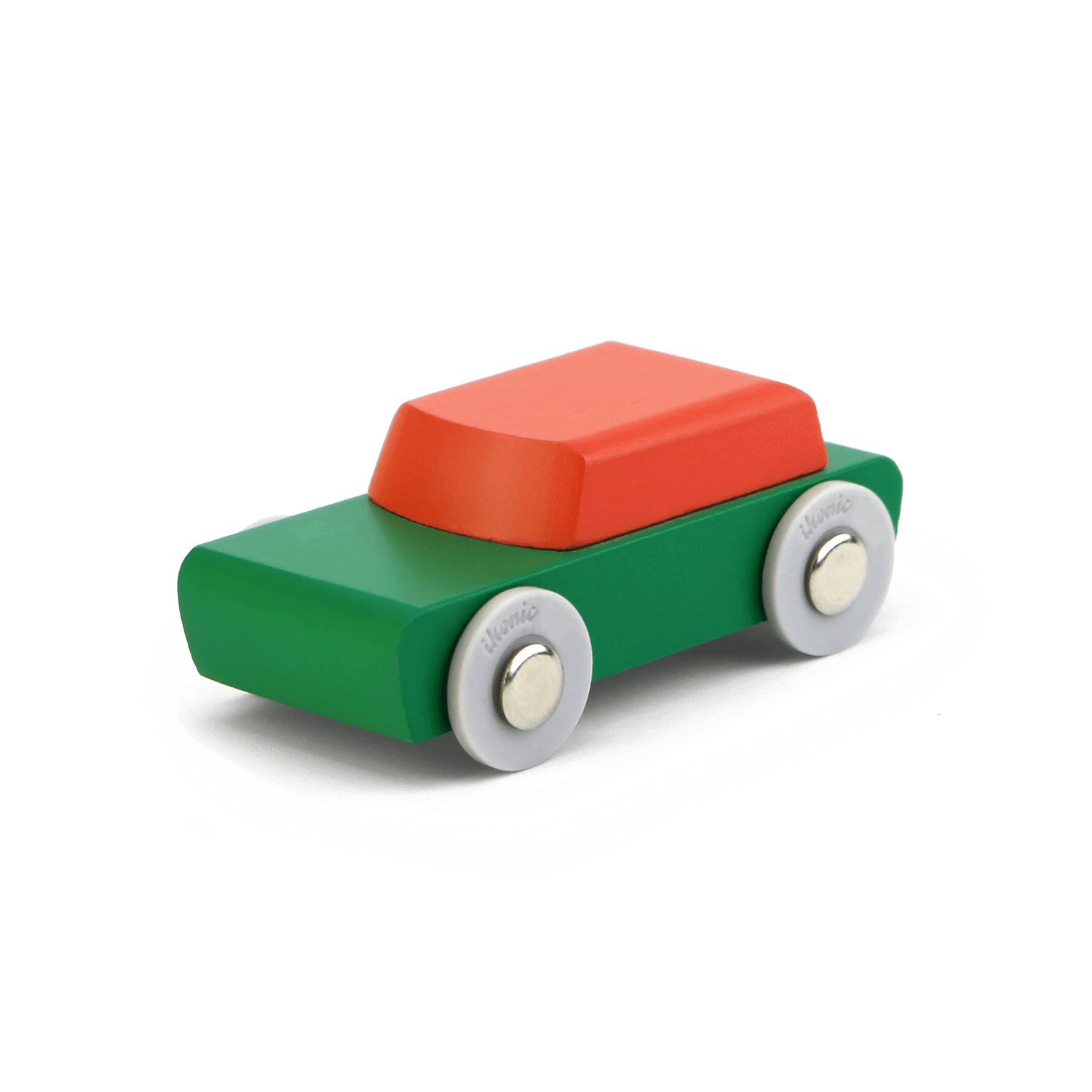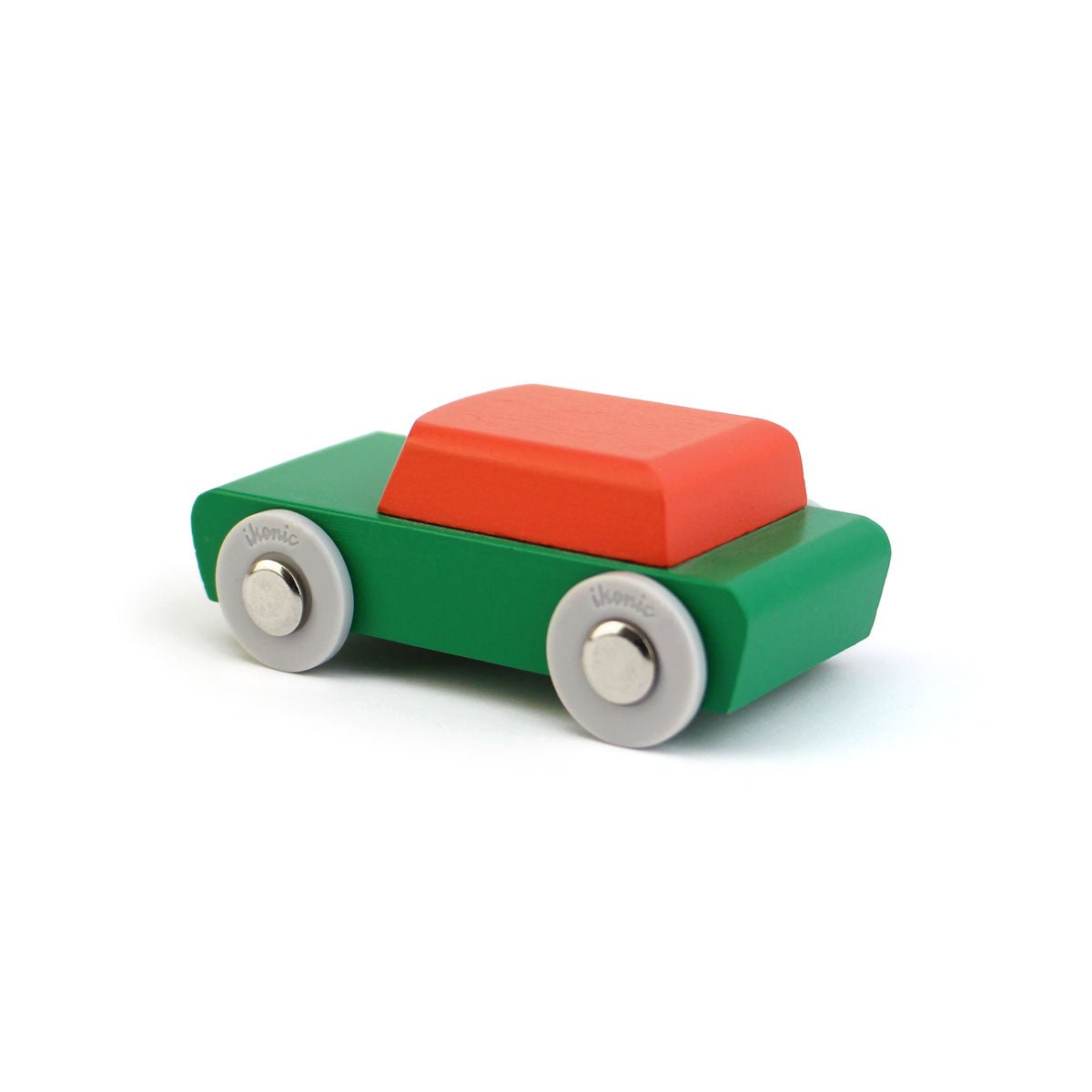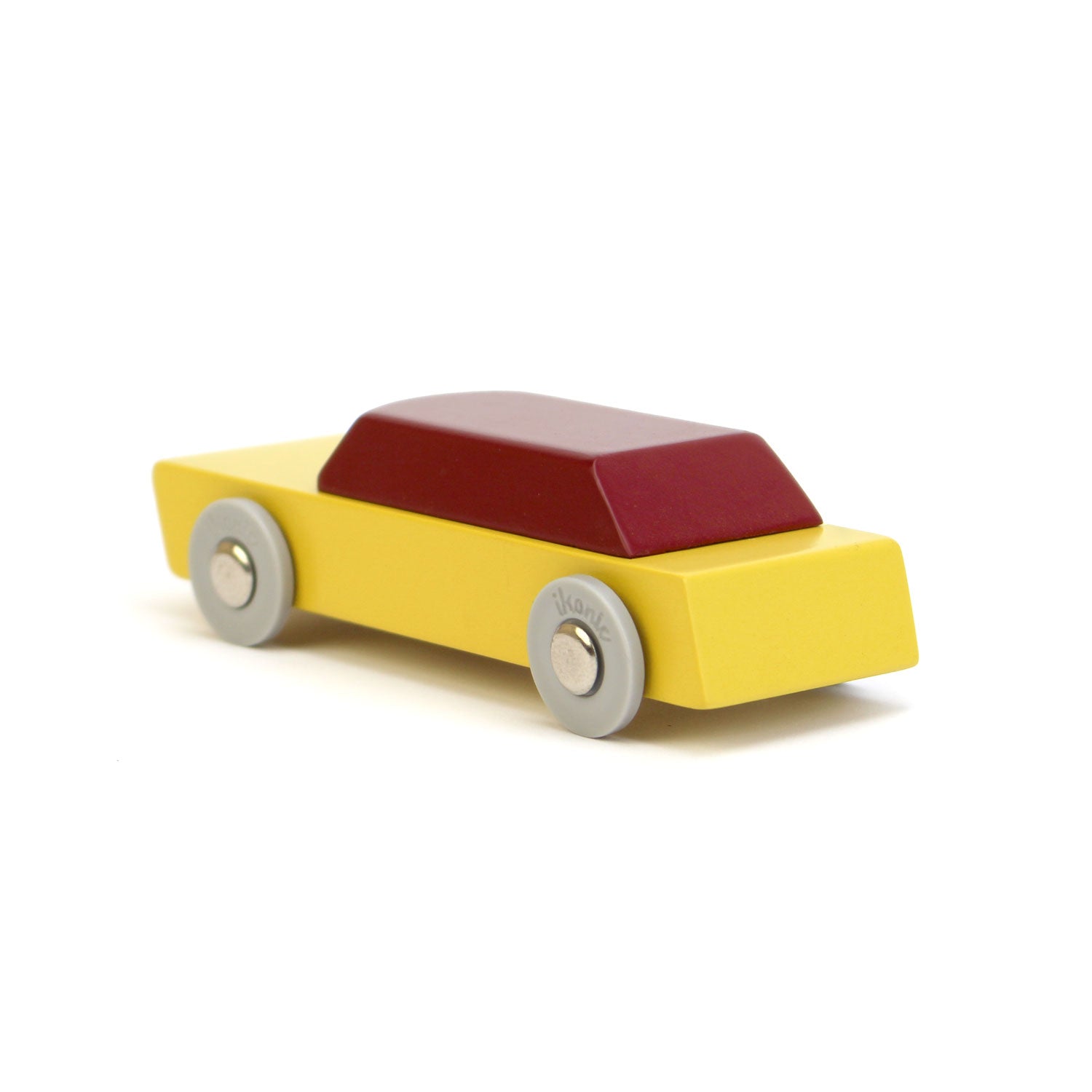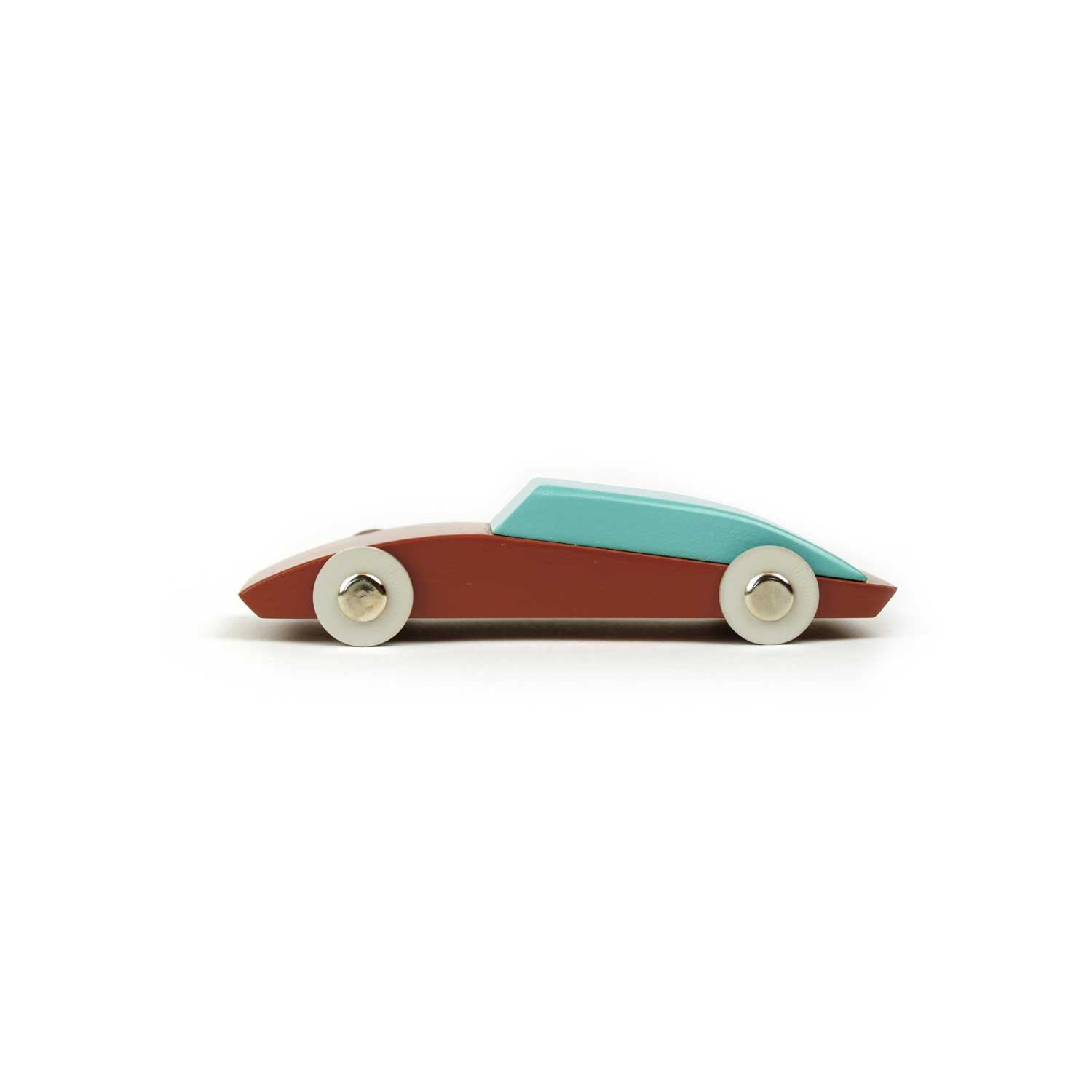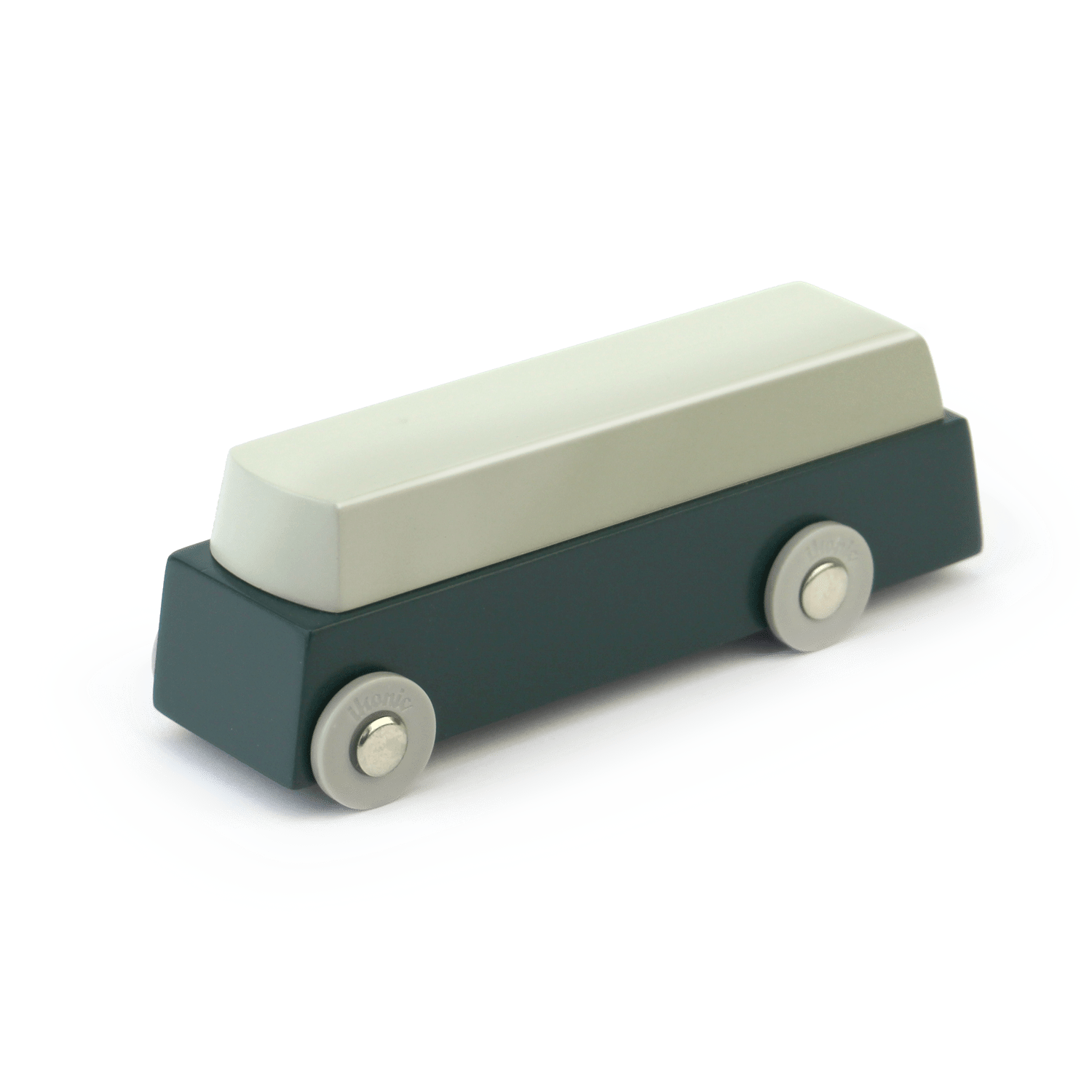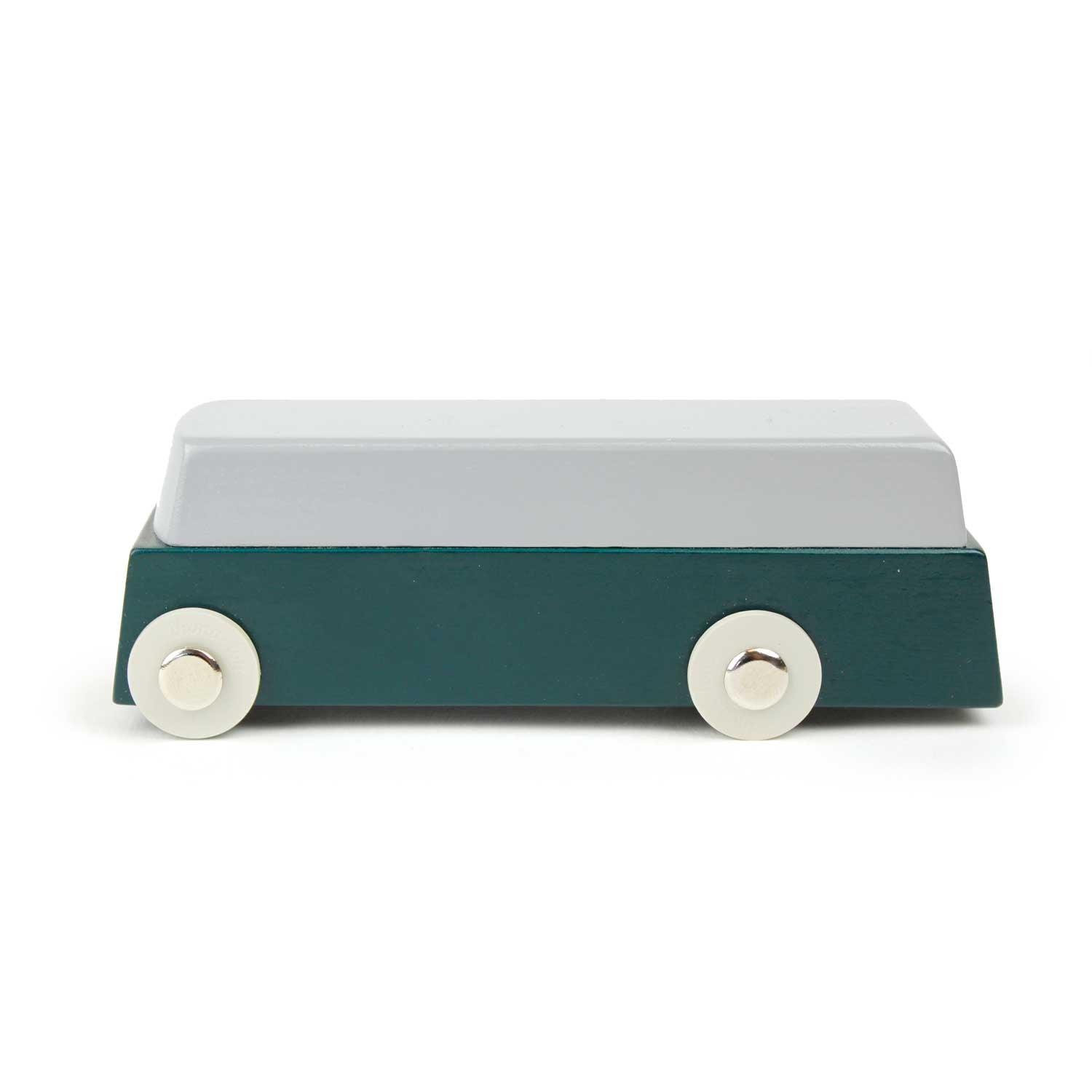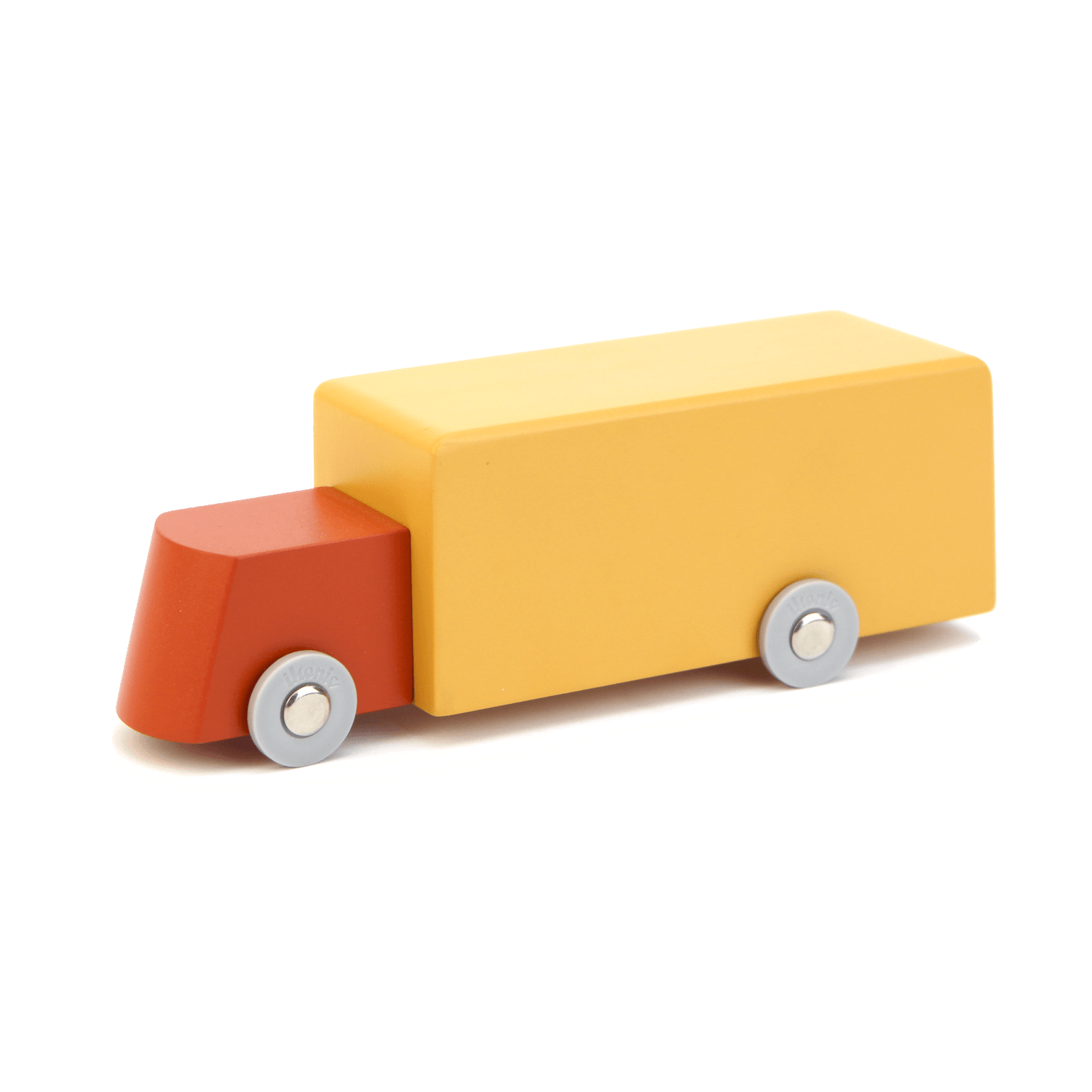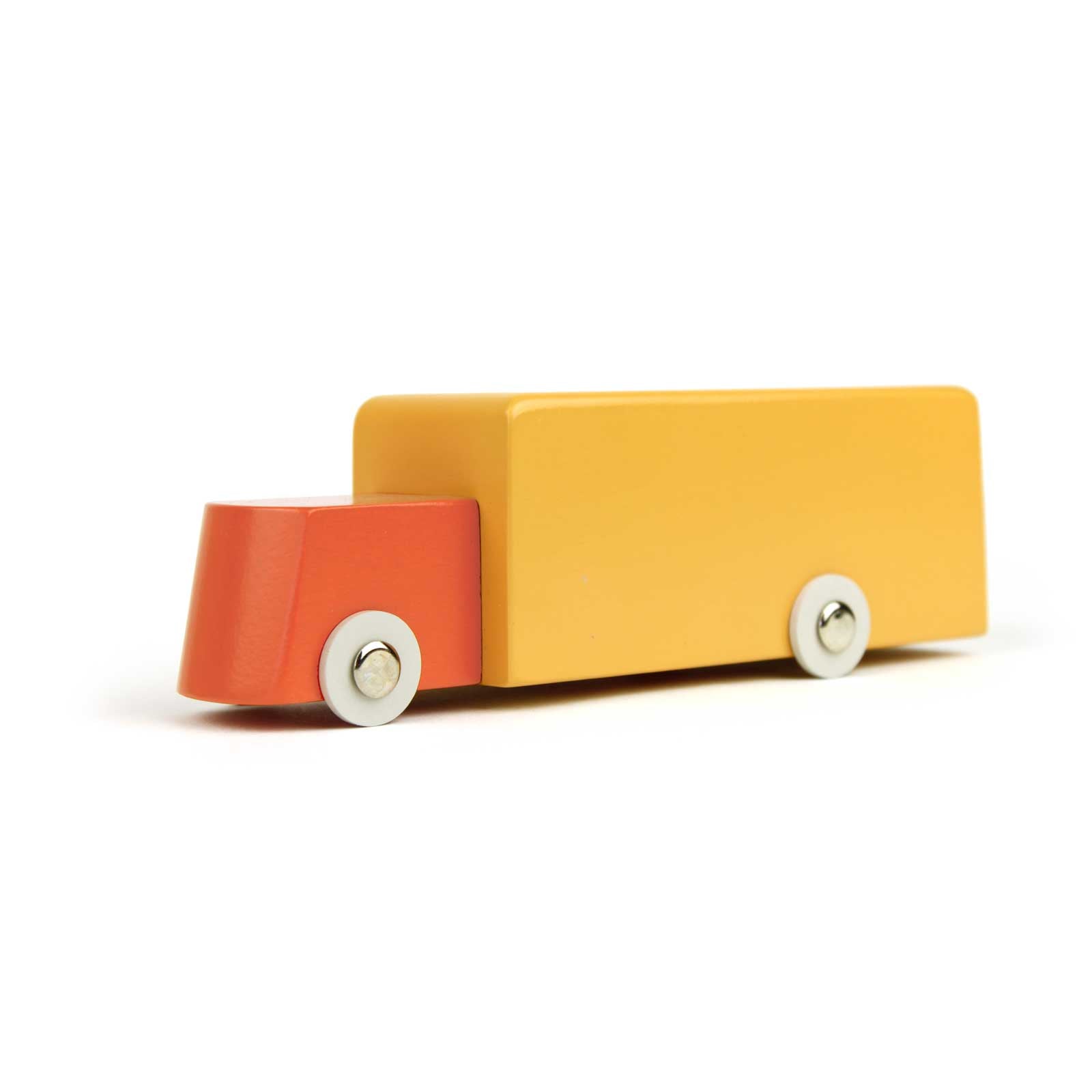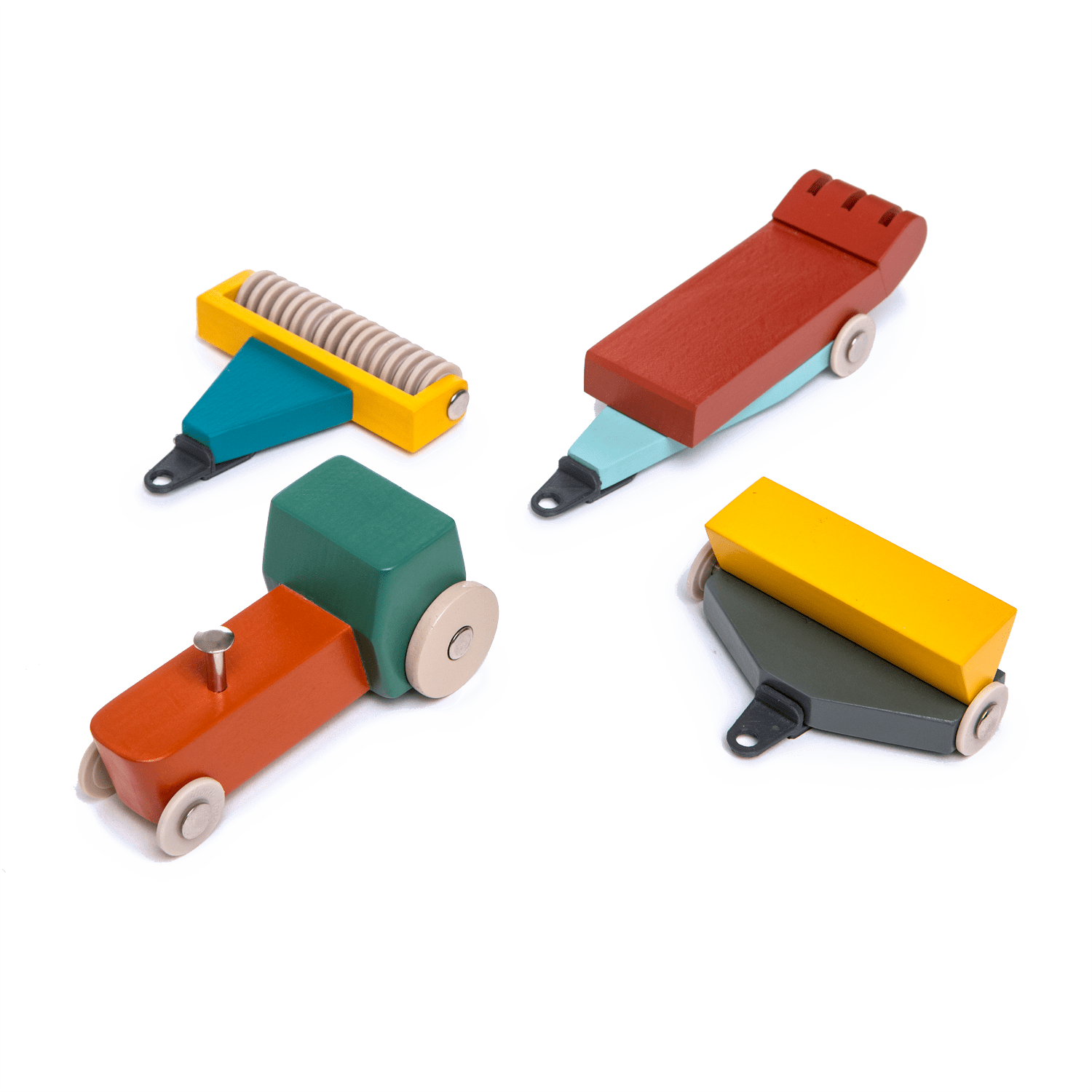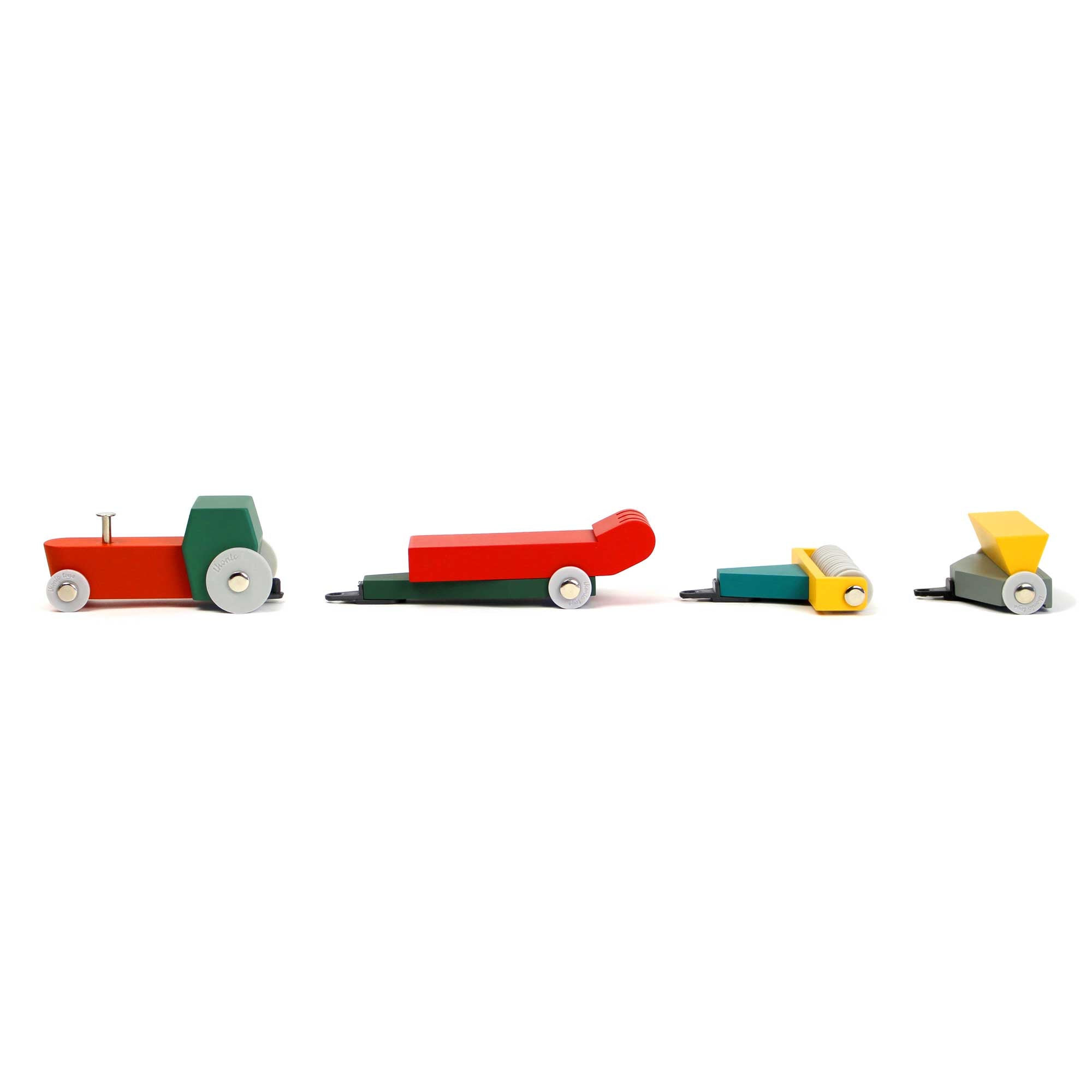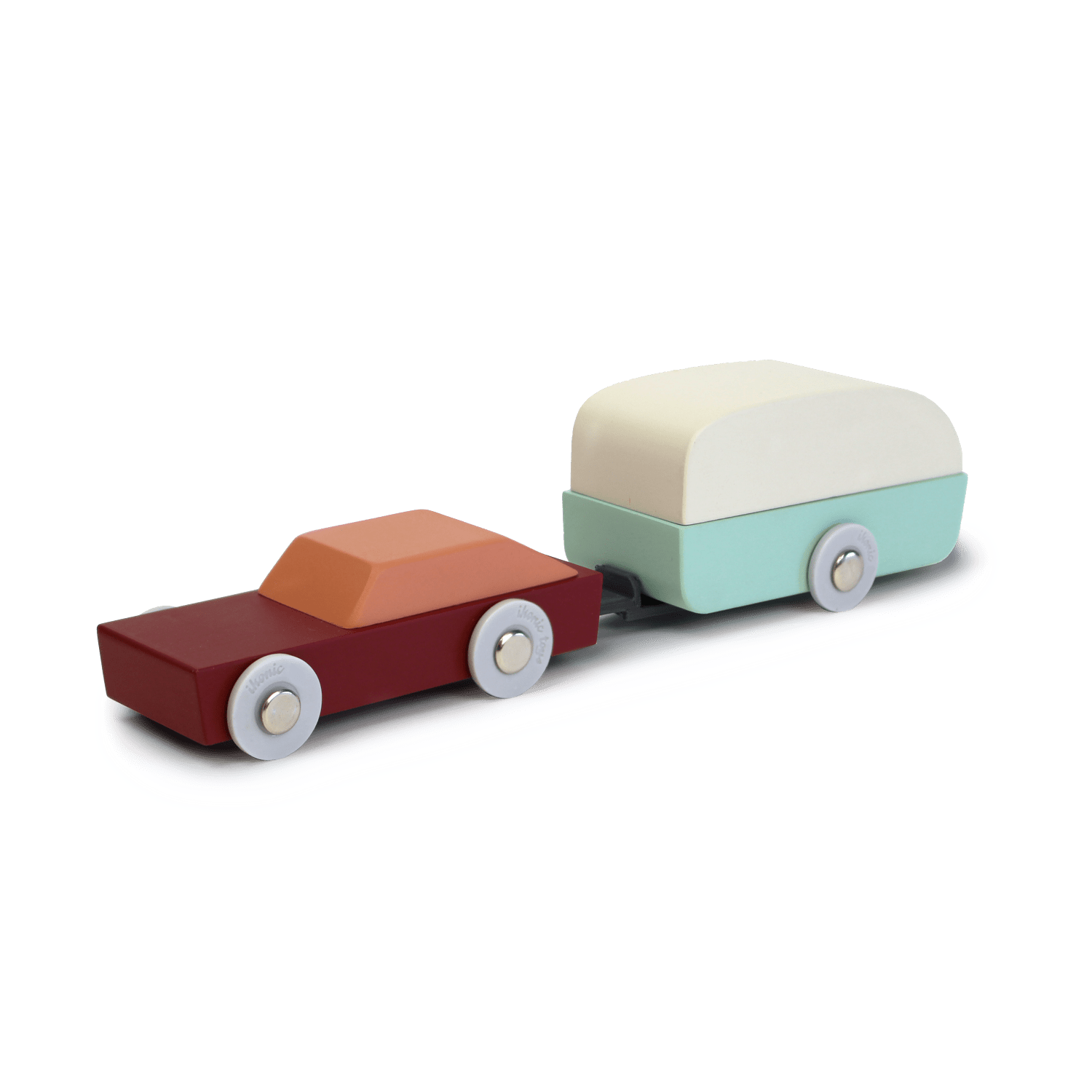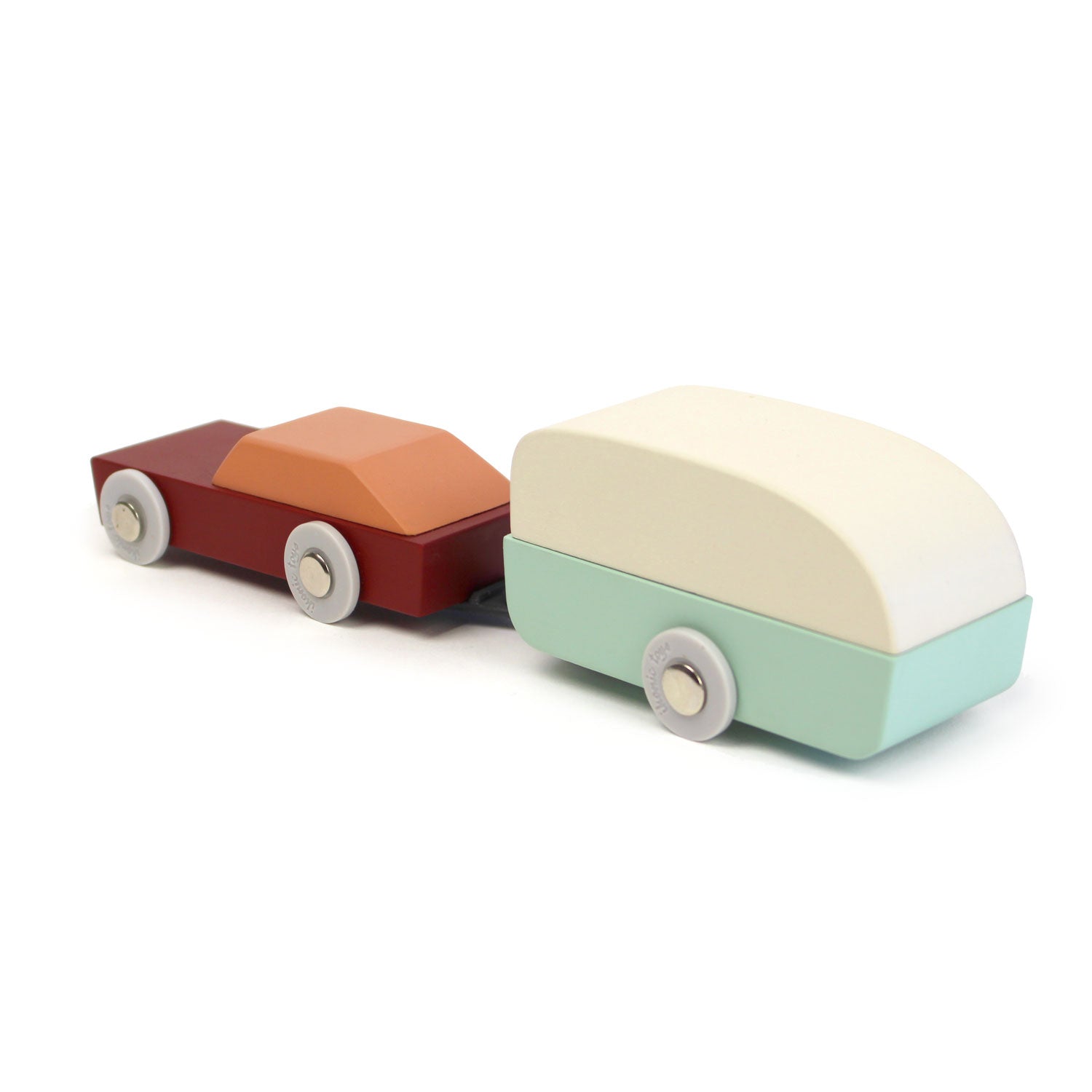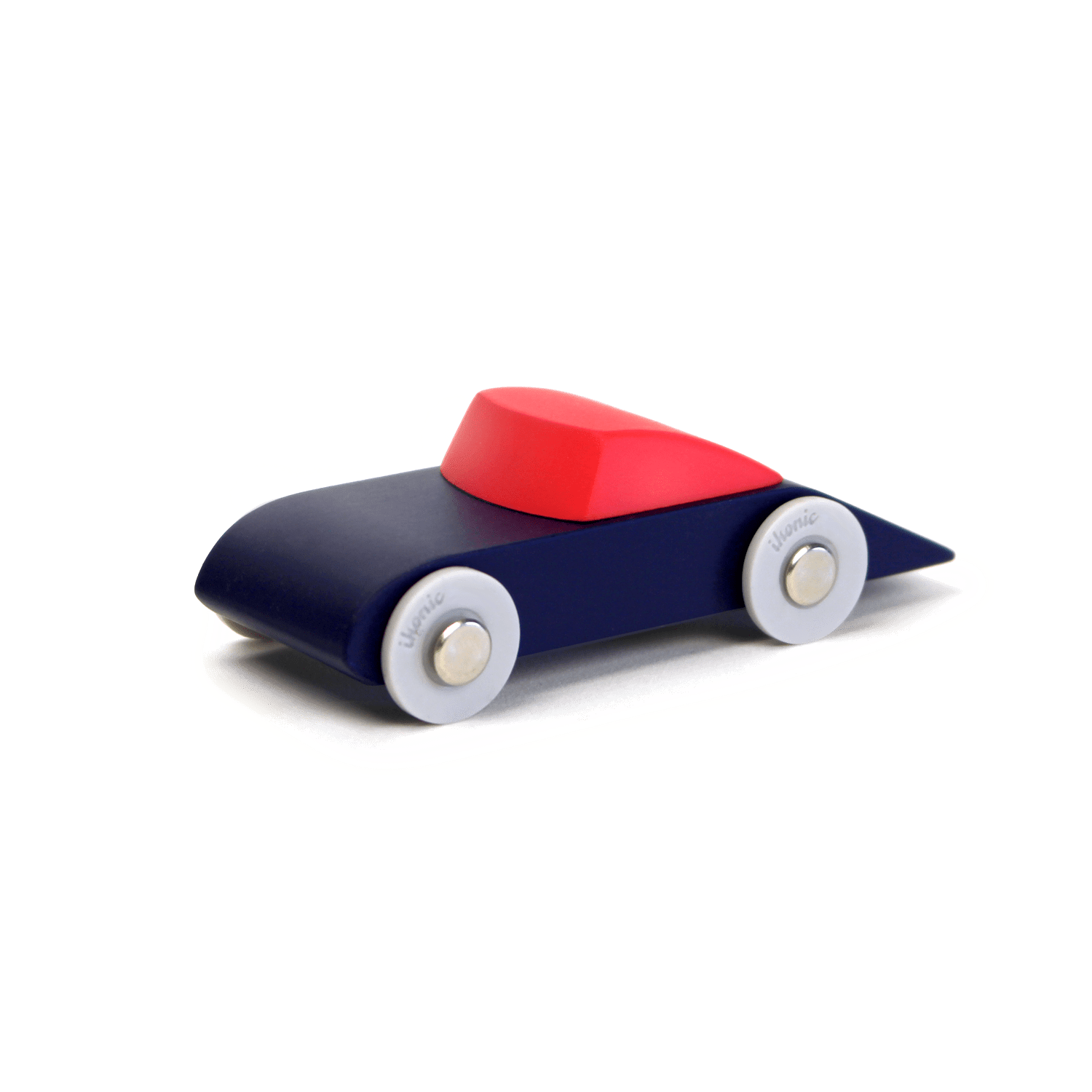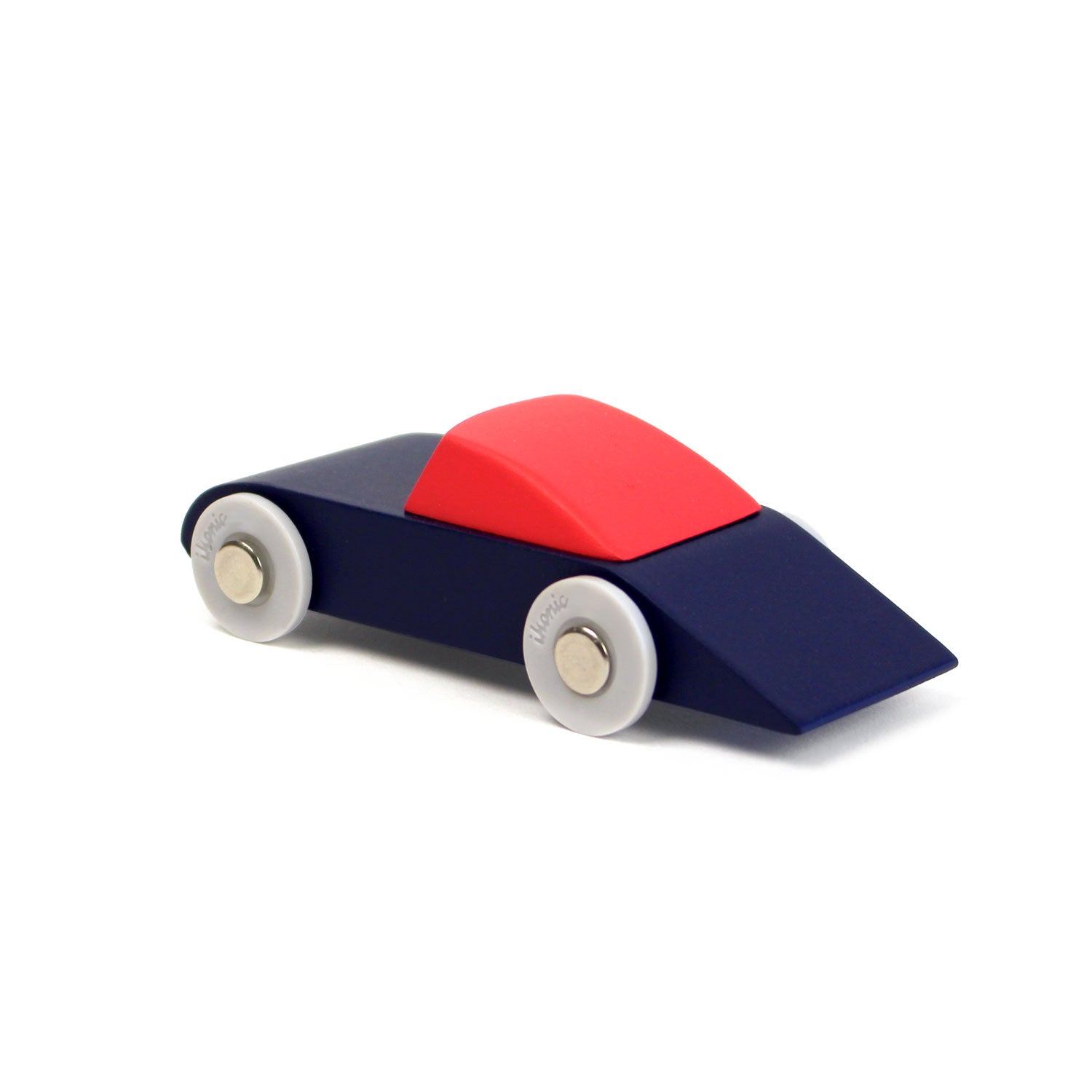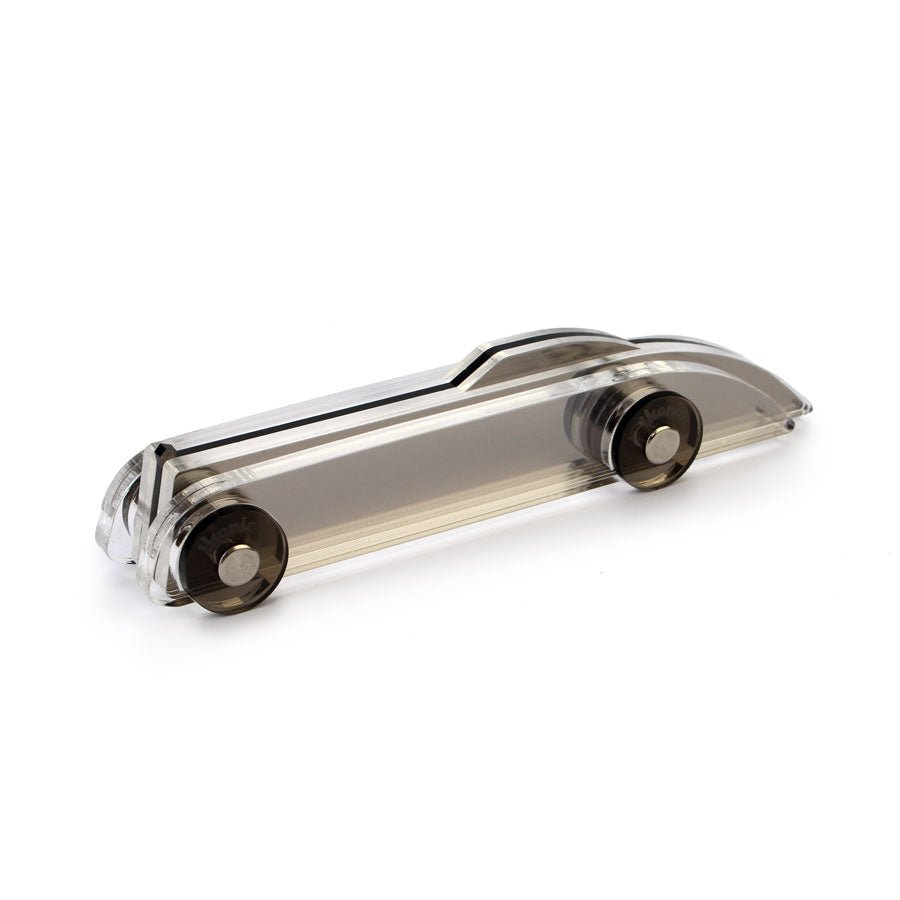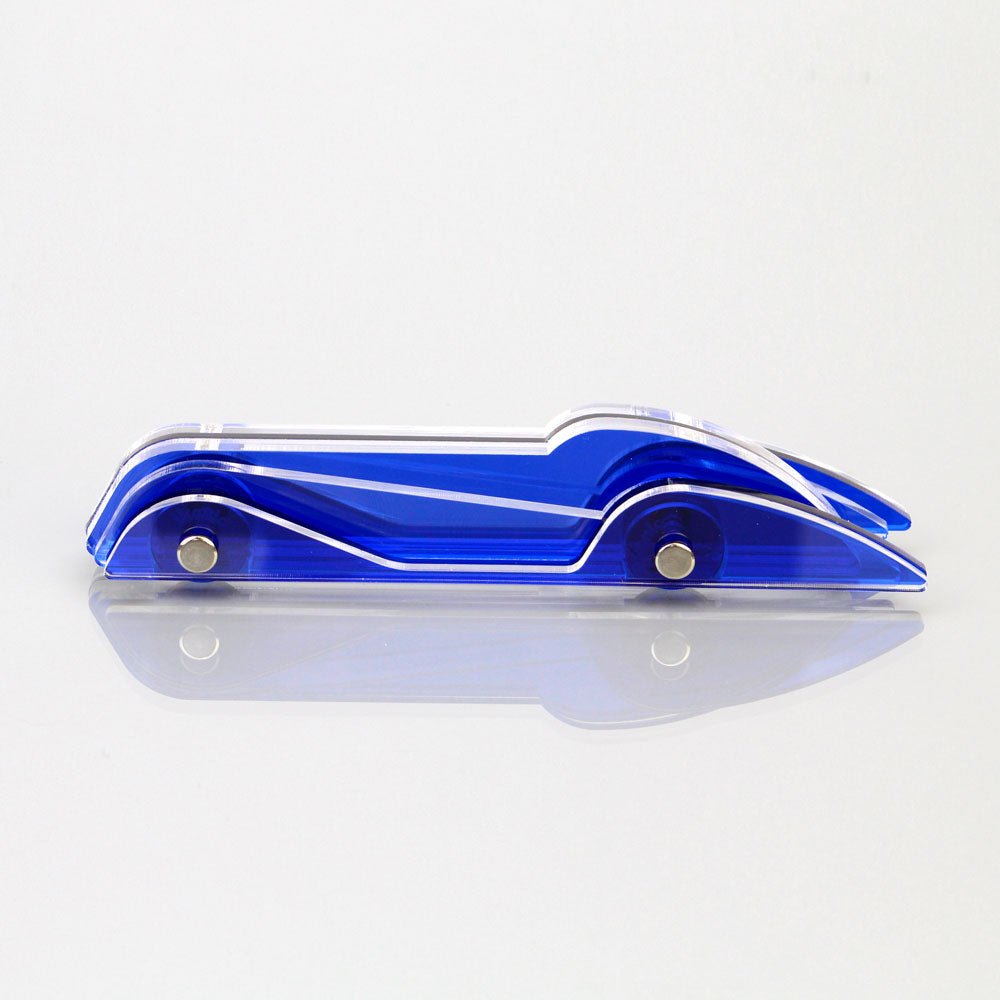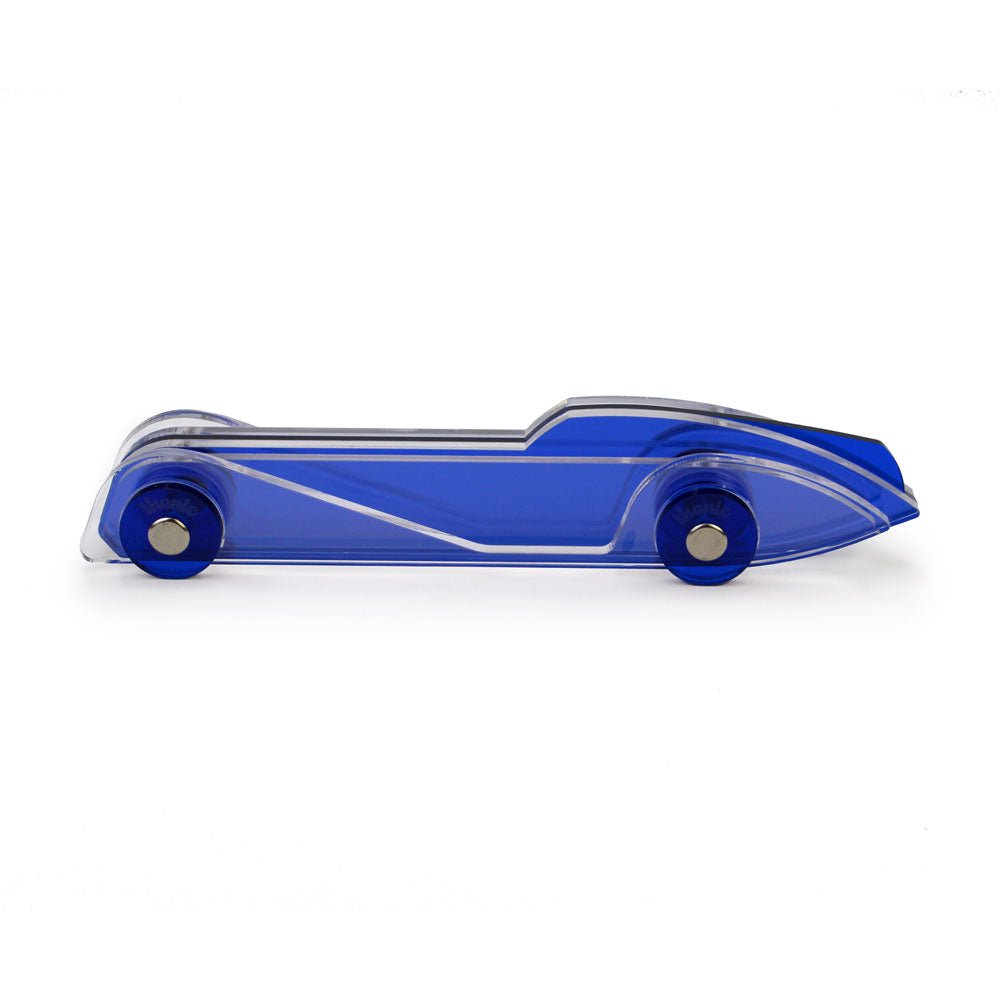
Design toy cars

Design toy cars are a special niche within the toy range that are distinguished by their well thought-out design, high-quality materials and often with the signature of a well-known designer. But what makes a designer toy car so special? In this article, we take a deep dive into the differences from standard toy cars, the reasons for choosing design, well-known designers, current trends, decorative value and safety. We answer all relevant online questions and, where possible, compare the facts and figures. Discover why the designer toy car is more popular than ever and what you should pay attention to if you want to buy a designer toy car for yourself, as a gift or collector's item.
What is a designer toy car?
A designer toy car is much more than a fun car to play with; It is a miniature designed with a particular attention to aesthetics, craftsmanship and use of materials. In contrast to mass-produced models, a designer toy car focuses on the creative process. Often these cars are designed by well-known designers or architects, who translate their artistic vision into the world of toys. Designer toy cars are available in limited editions, making them not only a playful addition to the playroom, but also a valuable collectible or even a style icon for design enthusiasts. Materials such as sustainable wood, solid metal or high-quality plastics are used, with attention to detail and finish. Where standard toy cars often try to approach the original as realistically as possible, the design toy car opts for artistic freedom: minimalist lines, bright color combinations, or even abstract shapes are common. For example: Floris Hovers' wooden cars are iconic, as are Lex Pott's minimalist Solid Cars or Maurice Doorduyn's transparent cars.
Differences between designer toy cars and standard toy cars
Regular toy cars are usually produced in large quantities and are aimed at low cost and mass sales. They are often made of lightweight plastic and hardly differ in design or choice of materials. The designer toy car contrasts with these standard models. Design toy cars are characterized by:
- Craftsmanship: More handwork, attention to every detail in the design and finish.
- Materials: Wood (often FSC-certified), high-quality plastic, aluminum or zinc, and preferably recycled or environmentally friendly material.
- Design: Often less realistic, more abstract or inspired by art movements such as modernism, Bauhaus or Scandinavian minimalism.
- Edition: Limited editions, regularly numbered and sometimes signed by the designer.
- Price: Design toy cars are more expensive due to the quality of the design and materials used. Prices vary between €25 and €120 each, for special editions it can be even more.
- Value: In addition to play and collector's value, many models have a decorative function. A designer toy car is often seen as a stylish addition to a living room or children's room. In short: where the standard toy car is intended for intensive, everyday play, a design toy car is designed for those who are looking for something special.

Why choose a designer toy car?
The choice for a designer toy car over a standard car can have different motivations. First of all, people often choose design for the love of beautiful and durable toys: such a car fits perfectly into a modern interior and enriches the atmosphere of a room. In addition, designer toy cars are made of high-quality and often durable material, so that they can withstand years of use and play. In addition, many design models have a unique look due to the design or the color schemes used, making every design toy car different. For parents and collectors, limited editions are a reason to choose the designer toy car. After all, these are real collector's items that retain or even increase their value, partly due to the reputation of the designer. Design toy cars also stimulate children's imagination through their playful, sometimes abstract shapes. Finally, they are an original gift, for example as a maternity gift, birthday gift or business gift. A designer toy car is therefore not only a toy, but also a tangible piece of design that will last for generations.
Well-known designers and brands of designer toy cars
The Netherlands plays a prominent role in the design of designer toy cars, but international names also distinguish themselves. Some well-known designers are:
- Floris Hovers: His Duotone Cars (IKONIC) and ArcheToys (Magis) series are loved for their balance between simplicity and use of colour.
- Vlad Dragusin of Candylab Toys (USA): Known for wooden cars with retro American shapes, high-quality paint and sturdy wheels.
- Lex Pott: Known for his solid wooden Solid Cars (IKONIC). Minimalism and pure forms are central.
- Ko Verzuu (ADO): known for his Bauhaus-style wooden cars. The designs of ADO and Ko Verzuu are collected a lot and are still increasing in value.
- Julian Meagher from Playforever (UK): popular, sleekly designed plastic toy cars of high quality.
- Hot Wheels: various collaborations with Daniel Arsham and Polestar, among others, grew into a hit among collectors.
These designers and brands share a focus on quality, innovation and originality, which makes the designer toy car distinctive and timeless.
Emerging trends in designer toy cars
Design toy cars are subject to new trends every year. We see a strong focus on:
- Sustainable and natural materials: FSC-certified wood, recycled plastic and biodegradable paints are gaining ground. Around 40% of all new designer toy cars in Europe are made from sustainable materials.
- Exclusive collaborations: Brands seek innovative collaborations with well-known designers for eye-catching limited editions. Think of Daniel Arsham x Hot Wheels, where car design, art and toys merge.
- Minimalism and retro: Clean, simple shapes and color palettes from the 60s/70s are popular. The appeal of this is that the toy fits into any interior, from modern to vintage.
- Collecting and decoration trend: The boundary between toys and art objects is becoming increasingly blurred. Design toy cars are popping up in collectors' display cabinets and as eye-catchers in (home) offices or children's rooms.
- Stories and individuality: Consumers want to know the story behind the design. Transparency about the production process, sources of inspiration and the personal story of the designer help determine the value and appeal. These trends come together in cars that are not only bought to play with, but also as a statement in the home.

Can a designer toy car also be used as decoration?
One of the great advantages of a designer toy car is its high decoration value. Due to the stylish design and choice of materials, these models are ideal for use as a home accessory, art object or eye-catcher. Many people place a designer toy car on a bookshelf, dresser, desk or bedside table. In children's rooms, a beautiful designer car often acts as an eye-catcher and can be part of the colour palette or thematic styling of the room. The design cars of brands such as Candylab, Ikonic and Playforever are also widely used in nursery styling or even in the office because of their design, where they radiate professionalism and a playful note. These models are also increasingly appearing as ambiance objects in shops and trade fairs. A design toy car thus combines the useful (toys) with the pleasant (decoration), a unique feature that few standard toy cars can match.

Is a designer toy car safe for young children?
Safety is at the heart of the production of designer toy cars. European legislation requires manufacturers and designers to adhere to the strictest safety standards. Most designer toy cars in Europe carry the CE mark, which guarantees that they meet the requirements of EN-71 (toy safety), among others. This means:
- No sharp edges, protruding parts or parts that can easily come loose.
- Use of non-toxic and solvent-free paints, usually water-based.
- Wooden cars are splinter-free and metal parts are well finished.
- No small parts for models for children under 3 years old.
Nevertheless, it is important to follow the recommended age recommendation of the manufacturer or designer, especially since some designer toy cars are primarily intended as decoration or for collectors. Always check the origin: models from Europe often meet stricter requirements than imported toys, for example from Asia, where CE safety is applied less strictly. A good design toy car offers fun and safety at the same time, provided you choose a reliable brand and the right age group.
Frequently asked questions about designer toy cars
- What is a designer toy car and what makes it different from regular toy cars?
A designer toy car is specially designed with an emphasis on aesthetics, high-quality materials and craftsmanship. In contrast to ordinary toy cars, where the design and finish are often limited to what is necessary, design toy cars are all about the unique character and special appearance. They are often produced in smaller quantities, sometimes made by hand and regularly designed by well-known artists or designers. - Why should I choose a designer toy car instead of a standard model?
A designer toy car offers advantages in terms of durability, originality, and decorative value. Due to the high-quality use of materials, they last longer and often remain popular as a collector's item or accessory. They are unique gifts and they offer inspiration for children and adults. - Which famous designers have designed toy cars?
Well-known names are Floris Hovers, Vlad Dragusin, Emanuel Rufo, Ko Verzuu, Kaj Bojesen, Lex Pott, Julian Meagher, Maurice Doorduyn, each with their own aesthetic and special collaborations. In the past, Karim Rashid, Jaime Hayon, Khodi Feiz, the Campana Brothers and Marcel Wanders have also designed wooden cars (100% TobeUs). - What are the trends in designer toy cars?
Sustainable use of materials, exclusive collaborations, minimalism & retro, integration of educational features and the focus on unique visual stories. - Can a designer toy car also be used as decoration?
Yes. Design toy cars are often just as well intended as interior decoration, gallery art, or mood objects as toys. Due to the versatile applications, their popularity has risen among adults. - Is a designer toy car safe for young children?
Designer toy cars produced in Europe meet strict safety standards. Pay attention to the age recommendation and always check the CE mark. For babies and toddlers, models without small parts are best suited.

Facts, figures and comparisons
With the rise of designer toy cars, the market for premium children's toys is growing steadily. The estimated annual turnover of premium design toys in Europe is around 50 million euros according to market analyses from 2023. Sustainable materials already make up about 40% of the newly released design collections. Limited design toy cars can increase in value by up to 70% when resold on collecting and auction platforms, depending on rarity and popularity. A standard plastic toy car from the supermarket costs on average between €2 and €8, while designer toy cars start at around €22 and can go up to more than €120 each. Special editions and artistic collaborations are immediately loved by collectors and quickly reach higher prices. This makes the design toy car not only fun as a toy, but also an interesting object for both investors and design enthusiasts.
Inspiration: design toy cars as gifts and collector's items
A design toy car is an excellent gift, whether it is a maternity gift, birthday gift or business gift. Because of the luxurious look and the unique design, giving a designer toy car always feels special. For collectors, design cars are an exciting new segment: the editions are often limited, so rare editions can quickly increase in value. Some models are even signed or numbered, which increases exclusivity. On platforms such as Catawiki, Marktplaats, Ebay and international auction sites, designer toy cars are increasingly offered and searched for, ranging from recent editions to rare older ones. The collecting mania is also growing rapidly among adults, partly thanks to the fact that most design toy cars are sustainably produced and thus in line with the growing desire for conscious shopping and responsible consumption.
Designer toy cars are more than toys: they are small art objects that unite aesthetics, inspiration and functionality. They make a statement in the interior and guarantee years of fun if safety requirements are met. Thanks to the attention to sustainability, collaboration with top designers and the rise of limited editions, designer toy cars are a lasting trend for young and old. Whether you are looking for an exclusive collector's item, responsible toys for your child or a special decoration for your home: the design toy car offers it all. With their blend of art, design and play value, they are an excellent choice for anyone looking for more in a toy car.







